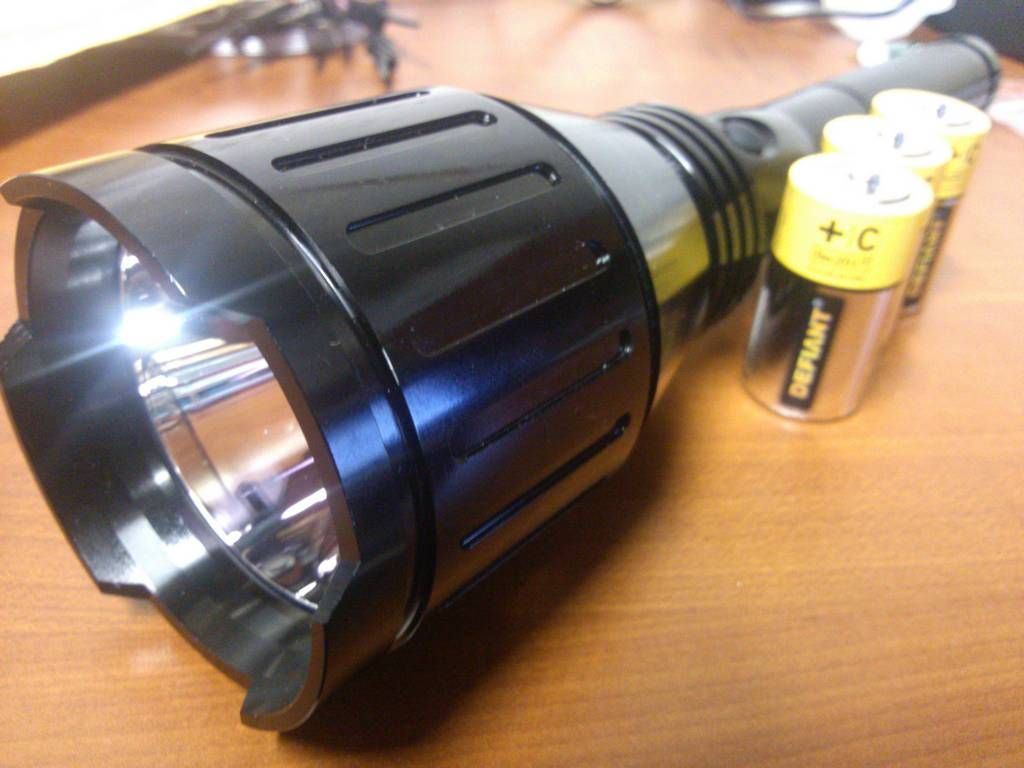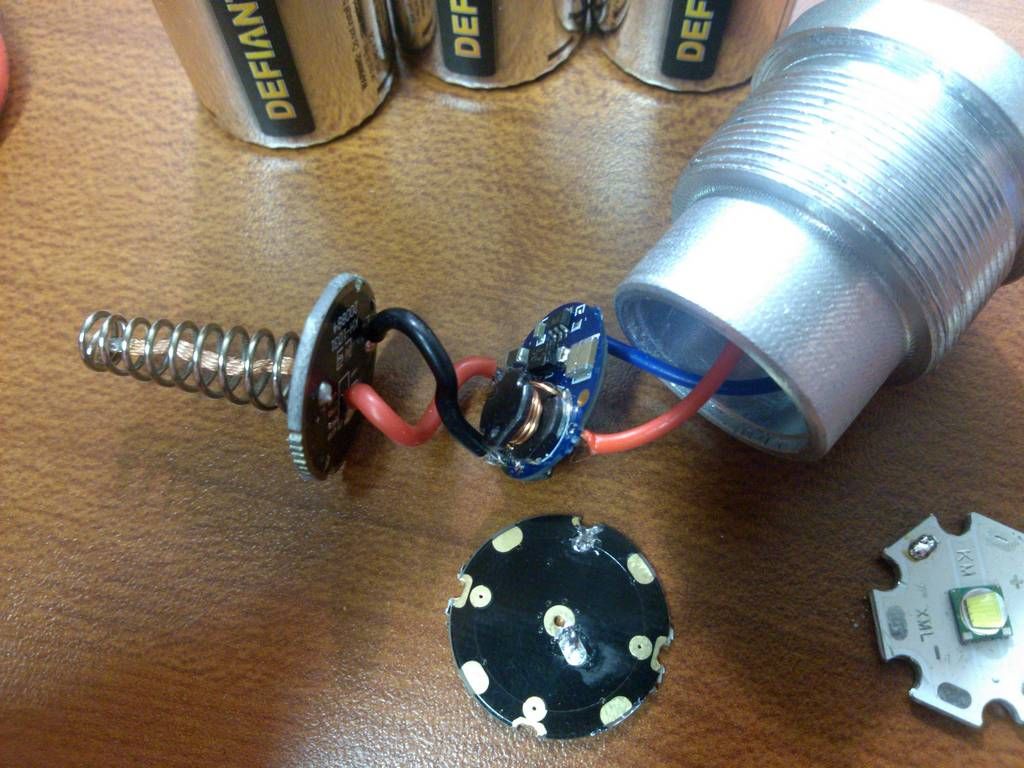Getting an HD Defiant 3C Super Thrower for me involved a recent business trip to SFO. And I always fly carry on (no checked bags). I sort of thought that part through after I got back to my hotel with the flashlight. Will they even let me carry this 'club' onto the plane???

At security there were some questions about it: "Sir we need to open your bag. There were some items that we could not identify on the X-Ray." Oh Boy. Being a frequent business traveler, I remain relaxed during the security scan procedure. It's not the first time I've been asked to search through my undies. No problem, help yourself.
I had the light in two pieces so it would fit better.
The first piece found was the battery tube. He didn't recognize it: I tell him "It's a flashlight battery tube".
Setting it aside he fishes out the head. "OK, now I see," he holds the two pieces together, "that's a big flashlight".
"Yeah, it is. I collect flashlights and this one is not available in Canada so I couldn't pass it up".
A small chuckle, "One second Sir, I need to show the X-Ray operator so she knows what it was for next time".
Holding back a laugh (thinking, as if this will ever happen again) "Sure, no problem."
He walks away and I start putting my bag back together.
When he returns he hands me the pieces "All yours, have a great flight Sir."
What I nice guy. I've heard a lot of different and less fortunate stories about confiscation at security. I'm happy to say that mine had a good ending.
OK, on to the mod. I've read a few different ideas for modding this light. Some include chopping, boring, new tubes, new drivers, MT-G2's, parallel batteries, etc. etc.
I decided that I wanted the light to look virtually stock on the outside. The only exterior change is the lens. I picked up two of the 64mm coated Leica lenses from Phil. A great deal from a great guy. I do hope he gets more flashlight parts someday.
I also wanted to make the most of the battery tube. Two 18650 cells will almost fill out the tube with about 1 inch to spare. Three 18500 cells would fill it the best, but their capacity isn't great and I have so many 18650 cells already, so 2x18650 it is. I'm too lazy to make a parallel adapter, so I needed a new driver.
The new driver will need to support 3C as well as 2x18650, so 3V to 8.4V operation is required.
I settled on this driver from Fasttech. Very nice driver, 3/5mode, selectable like the new NANJG 105C, but mode changing is not next-mode so it's even better. No visible PWM was a nice bonus. On 3C cells I still get almost full output; with fresh cells, about 70% of the 2x18650 drive.

One problem; the battery contact board is too big. I ended up stripping all two components from the existing driver and using that instead.
The driver itself barely fits up into the pill, but it fits. I'm a little concerned about it shorting against the pill, but the angle it's in there seems to keep things away from the sides. I may have to add something to prevent a short though.

The driver has an R025 (0.025 Ohm) current sense resistor, which I did not modify yet. It is located right next to the black emitter wire. This is supposed to give about 2.8A at the emitter and based on the output, I believe it is close if not slightly more. With two fully charged Panasonic NCR18650As, tailcap current weighs in at 1.48A. So far, this driver looks good.
I also upgraded the emitter to an XM-L U3 1B, again from Fasttech. No point in doing all of that work just to keep the same emitter in there. ;)
For the battery spacer, since this is a side clicky you can use anything you want if you put it on the tailcap end. As long as it's electrically conductive and long enough, it doesn't matter if it shorts against the sides. I currently have a copper bolt in there.
The batteries are wrapped to hold them in place and prevent rattle. 3/4" PVC pipe will work fine too.
That's it! Lens, driver, emitter, battery wrap, and a battery spacer. Three modes (including a nice low), about 780 lumens OTF, and 56kcd for throw. I'm happy with it... for now. ;)
If anyone wants pics of something specific I'll try and take them.
Happy Modding! :) searchID8935